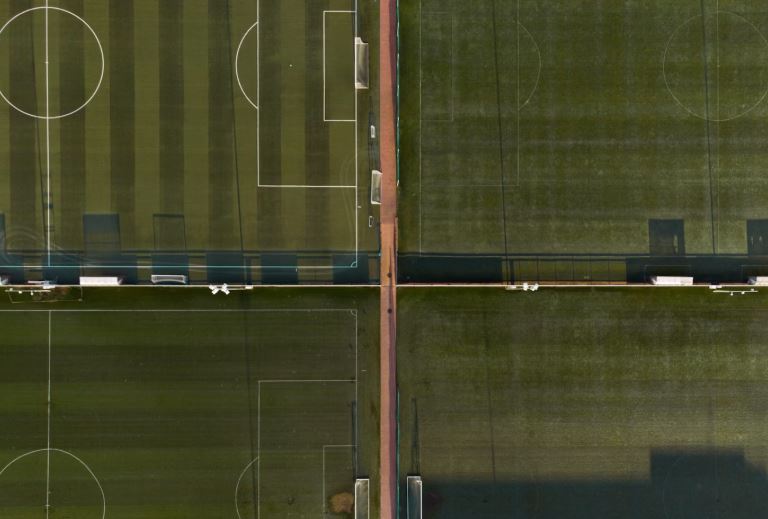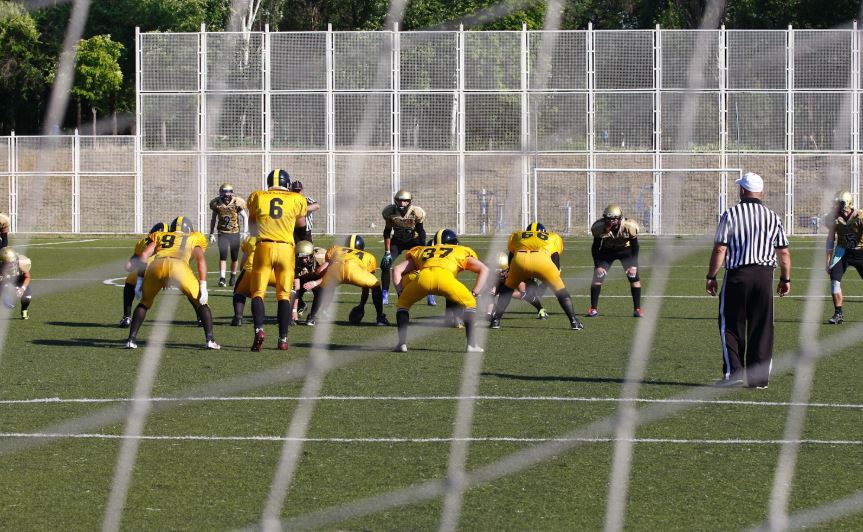
Introduction: The Rise of the Inverted Fullback
In modern football, traditional fullbacks who simply overlap and cross are becoming extinct. Instead, managers like Pep Guardiola, Mikel Arteta, and Jürgen Klopp are deploying inverted fullbacks—a tactical innovation that has reshaped how teams control games.
But why? What makes this role so effective?
This article breaks down:
✅ What an inverted fullback actually does
✅ Why top managers love this tactic
✅ Real-world examples (Man City, Arsenal, Bayern Munich)
✅ The pros and cons of using inverted fullbacks
✅ How teams exploit this system defensively
1. What is an Inverted Fullback?
An inverted fullback (IFB) is a defender who moves inside (into central midfield) rather than staying wide. Unlike traditional fullbacks who overlap wingers, IFBs:
- Tuck into midfield to form a double pivot
- Act as extra midfielders in possession
- Create numerical superiority in the middle
The Inverted Fullback (IFB): A Tactical Revolution in the Defensive Line
The traditional fullback role, long defined by tireless overlapping runs down the flanks to provide width and crosses, has undergone a radical transformation in modern football. This evolution has birthed the Inverted Fullback (IFB), a positionally fluid defender whose primary movement is inward, towards central midfield, rather than outward along the touchline. This deliberate inversion fundamentally alters a team’s structure and build-up play.
1. The Core Movement: Tucking into Midfield (Forming the Double Pivot)
The defining characteristic of an IFB is this inward movement, typically when the team is in established possession. Instead of sprinting past the winger ahead of them to stretch the play horizontally, the IFB drifts infield, positioning themselves alongside or just behind a central midfielder. This movement isn’t random; it’s calculated to form a double pivot at the base of midfield.
-
Why a Double Pivot? A double pivot (two deep-lying midfielders operating close together horizontally) provides crucial stability and control in the center of the park. It creates a solid foundation for recycling possession, switching play, and shielding the defense during turnovers.
-
How it Changes Shape: When an IFB tucks in, the team’s formation dynamically shifts. For example, a nominal 4-3-3 instantly morphs into a 3-2-4-1 or 3-1-6 in possession:
-
The two center-backs spread wide.
-
The IFB moves centrally alongside the designated pivot midfielder (or sometimes a dropping #8).
-
The remaining fullback might stay wider or also invert, depending on the system.
-
This creates a back three in name only, with the IFB functionally becoming a midfielder.
-
-
Enabling the Back Three: This movement allows one center-back to step into midfield if needed, knowing the IFB provides cover centrally. It also gives the other center-backs more space to spread wide, creating better passing angles to bypass an opposition press.
2. Function in Possession: Acting as an Extra Midfielder
By moving inside, the IFB ceases to be purely a defender and actively becomes an extra midfielder during the attacking phase. This has several critical benefits:
-
Numerical Superiority in Build-Up: The most significant advantage. Adding an extra body centrally (the IFB) means the team now has more players in the most congested and critical area of the pitch. This makes it harder for opponents to press effectively or mark tightly without leaving gaps elsewhere.
-
Superior Passing Angles and Control: Positioned centrally, the IFB offers short, safe passing options for center-backs and the goalkeeper under pressure. They act as a vital release valve, helping the team play through the opponent’s first line of press rather than resorting to long balls or risky passes. Their positioning facilitates triangular passing patterns in the heart of midfield.
-
Progressing Play: The IFB isn’t just a safety net. They are expected to receive the ball under pressure, turn, and play progressive passes forwards – either line-breaking passes between the lines to attackers or diagonals to switch play to the opposite flank. They need the technical security and vision of a midfielder.
-
Creating Space for Wingers/Attackers: By not overlapping, the IFB vacates the wide channel. This space is then occupied by the winger, who can now receive the ball in a 1v1 situation against the opposition fullback, often with more room to operate. It encourages wingers to stay high and wide, pinning back defenders.
-
Relieving Midfield Pressure: By dropping deep and central, the IFB can receive passes that might otherwise be forced towards the team’s creative midfielders (#8s or #10), who are often heavily marked. This gives those advanced playmakers more freedom and time.
3. Strategic Impact: Creating Numerical Superiority
The overarching goal of deploying an IFB is to engineer numerical superiority in central midfield. This principle is fundamental to controlling games:
-
Overloading the Middle: Against a standard midfield two (e.g., in a 4-4-2 or 4-2-3-1), adding an IFB alongside a pivot midfielder creates a temporary 3v2 advantage. Against a midfield three, it can create a 3v3 but with the IFB positioned deeper, potentially freeing a more advanced midfielder.
-
Baiting the Press: By building with a nominal back three (often the two CBs and the opposite fullback or a DM dropping in), teams invite the opposition to commit players forward to press. The IFB’s central positioning provides the perfect outlet to bypass this press once it’s committed, springing the team into the space left behind.
-
Fluid Positioning and Confusion: The unpredictable movement of the IFB (when do they invert? how deep? how high?) forces opposition forwards and midfielders to make constant decisions about who marks them. This can create confusion, drag markers out of position, and open passing lanes for others.
-
Defensive Transition Security: While primarily an attacking function, the central positioning of the IFB means they are naturally better placed to counter-press immediately after a turnover or provide cover in central areas if the ball is lost higher up the pitch, compared to a traditional fullback stranded high and wide.
Trade-offs and Requirements:
The IFB role isn’t without its demands and risks:
-
Player Profile: Requires exceptional tactical intelligence, spatial awareness, composure under pressure, and the technical passing range of a central midfielder. Defensive solidity (tackling, positioning 1v1) is still crucial.
-
System Dependency: Requires specific complementary roles: wingers who provide width and can isolate fullbacks 1v1; center-backs comfortable spreading wide; a solid midfield partner for the pivot.
-
Vulnerability Wide: If the ball is turned over while the IFB is inverted, the wide channel they vacated is exposed, requiring excellent recovery runs or cover from wingers/center-backs.
-
Lack of Traditional Width: The team relies heavily on wingers or the opposite fullback for width and crosses, potentially reducing traditional crossing opportunities.
In essence, the Inverted Fullback represents a sophisticated tactical tool designed to dominate the center of the pitch through intelligent positioning, adding crucial numbers and passing options in midfield to control possession, dictate tempo, and unlock stubborn defenses, fundamentally redefining the defensive contribution in the modern game. Its prevalence under coaches like Pep Guardiola, Mikel Arteta, and Jurgen Klopp underscores its effectiveness in contemporary elite football.
Key Traits of an Inverted Fullback
✔ Strong passing ability (must dictate tempo)
✔ High tactical IQ (knows when to underlap/overlap)
✔ Defensive awareness (covers counterattacks)
Example:
- João Cancelo (Man City/Barcelona)
- Oleksandr Zinchenko (Arsenal)
- Trent Alexander-Arnold (Liverpool, hybrid role)
(Diagram: Comparison of traditional vs. inverted fullback positioning)
2. Why Are Teams Using Inverted Fullbacks? (4 Key Reasons)
Reason 1: Control Midfield Battles
Most elite teams now face low-block defenses that crowd the center. By moving a fullback inside:
- They create a 3v2 or 4v3 overload in midfield
- Break lines with diagonal passes (see Rodri at Man City)
- Prevent counterattacks by maintaining structure
Stat: Man City averages 62% possession in Premier League games—largely due to inverted fullbacks.
Reason 2: Free the Wingers
Traditional overlapping fullbacks force wingers to stay narrow, reducing creativity. With an IFB:
- Wingers stay wide and isolate defenders 1v1 (e.g., Saka at Arsenal)
- More cutback opportunities (a higher xG chance than crosses)
Case Study: Bukayo Saka’s 14 league goals in 2023/24 came largely from Zinchenko’s inverted runs.
Reason 3: Protect Against Counters
Fullbacks caught high up the pitch leave huge gaps. IFBs help by:
- Forming a back three when the other fullback attacks
- Acting as a midfield shield (like a defensive No. 6)
Example: Bayern Munich’s Joshua Kimmich stops 2.3 counterattacks per game as an IFB.
Reason 4: Unlock Creative Playmakers
Playmakers like Kevin De Bruyne thrive when they have passing options everywhere. IFBs:
- Draw opposition midfielders out of position
- Create space for No. 10s to exploit
Guardiola Quote:
“The inverted fullback is like a secret weapon. You don’t see it until it’s too late.”
3. Real-World Examples (2024 Tactics)
A. Manchester City (Pep Guardiola’s Masterclass)
- Player: Rico Lewis/John Stones
- Role: Stones moves from CB to midfield, Lewis inverts
- Result: City dominates midfield, 85% pass accuracy in final third
(Heatmap: Stones’ positioning vs. traditional CBs)
B. Arsenal (Arteta’s Hybrid System)
- Player: Zinchenko/White
- Role: Zinchenko inverts, White stays wide
- Result: Ødegaard gets 40% more touches in half-spaces
C. Liverpool (Trent Alexander-Arnold’s Evolution)
- Player: Trent (right-back → midfield hybrid)
- Role: Inverts to spray long balls
- Result: 9 assists in 2023/24 from deep
4. The Downsides of Inverted Fullbacks
❌ Vulnerable to quick wingers (e.g., Vinícius Jr. exploits the space)
❌ Requires elite midfield discipline (or gaps appear)
❌ Can isolate strikers if wingers don’t stretch play
Failed Experiment:
- Luke Shaw at Man Utd (2023) – Lack of midfield cover led to 3 big chances conceded per game.
5. How to Beat an Inverted Fullback System
The rise of the inverted fullback (IFB) has revolutionized build-up play and midfield control, but like any tactical innovation, it creates exploitable vulnerabilities. Teams such as Real Madrid (under Carlo Ancelotti) and Napoli (notably under Luciano Spalletti) have pioneered counter-strategies that disrupt IFB-centric systems. These approaches target the spatial, structural, and personnel weaknesses inherent when a fullback abandons the wide channel to join midfield. Here’s how they do it:
1. Pressing the Center-Backs: Forcing Errors at the Source
The inverted fullback system relies on center-backs (CBs) having time and passing options to initiate play. By applying aggressive, coordinated pressure on the CBs, opponents can:
-
Isolate them vertically: Cutting off passing lanes to the goalkeeper and double pivot.
-
Force turnovers in dangerous areas: Errors under pressure near the box lead to high-quality chances.
-
Prevent the IFB from receiving comfortably: If CBs are harried, they can’t find the inverted fullback moving inside.
Real Madrid’s Execution:
In their UCL clashes against Manchester City, Madrid used a hybrid press. Karim Benzema would curve his run to block passes to the pivot, while midfielders (like Modrić or Valverde) jumped to press CBs. This forced rushed long balls or turnovers in City’s half.
Key Principle: Deny the first pass to the inverted fullback, and the system crumbles.
2. Exploiting the Weak-Side Winger: Rapid Switches of Play
When an IFB tucks inside, they vacate their wide defensive zone. This creates a 2v1 overload against the remaining winger on the opposite flank:
-
Targeting the “Weak Side”: If the left-back inverts, the right winger (and overlapping right-back) attack the space he left.
-
Quick Transitions: Teams bypass the crowded midfield with long diagonals to the isolated winger (e.g., Vinícius Jr. vs. an exposed right-back).
-
Third-Man Runs: Midfielders or strikers drift wide to support the winger, overwhelming the defense.
Napoli’s Formula:
Against Liverpool in the 2022 UCL, Napoli used Piotr Zieliński and Khvicha Kvaratskhelia to pin Trent Alexander-Arnold (an IFB) inside, then switched to Giovanni Di Lorenzo charging forward from right-back. This created 3v2 overloads out wide.
3. Man-Marking the IFB: Nullifying the Midfield Advantage
Assigning a dedicated marker to track the IFB’s movement neutralizes their numerical superiority:
-
Strikers/Midfielders as Shadows: A forward (e.g., False 9) or midfielder follows the IFB into deep areas.
-
Disrupting Build-Up: The inverted fullback can’t receive freely, breaking the team’s passing rhythm.
-
Creating Mismatches: If the marker is a forward (like Gabriel Jesus), they drag CBs out of position when pressing.
Real Madrid’s Masterclass (UCL 2022):
Martin Ødegaard (then at Arsenal) was tasked with man-marking Casemiro (dropping from CB to pivot) in a 2020 match. By sticking to him, Ødegaard prevented Casemiro from dictating play, forcing Arsenal into sideways passes.
Ancelotti’s Trick:
“We let the fullback come inside… then attack the space behind.”
Carlo Ancelotti’s Psychological Trap: “Let Them Come, Then Attack”
Ancelotti’s iconic quote—“We let the fullback come inside… then attack the space behind”—reveals a deeper layer of tactical baiting:
-
The Illusion of Control: Allow the IFB to move centrally unopposed, luring the opponent into a false sense of security.
-
Trigger the Press: Once the IFB receives the ball, a midfielder (e.g., Kroos) presses him while a winger (Vini Jr.) sprints into the vacated channel.
-
Vertical Passes Behind: A quick ball over the top exploits the space left by the IFB before they can recover.
Why It Works:
-
The IFB is often a defender in midfielder’s clothing—less agile in transitions.
-
Center-backs hesitate to cover wide, fearing central gaps.
-
It turns the IFB’s strength (midfield presence) into a liability (defensive exposure).
Additional Countermeasures
-
High Wingers: Deploying wingers high and wide pins back the opposition’s remaining fullback, limiting their ability to cover.
-
Asymmetric Pressing: Overload one side to force play toward the inverted fullback, then trap them.
-
Direct Bypass: Goalkeepers or CBs hitting long balls behind the IFB’s channel before they can retreat.
Implementation Challenges
Countering IFBs requires extreme discipline:
-
Synchronized Pressing: One mistimed jump creates gaps.
-
Athletic Fullbacks: To cover space left by weak-side exploitation (e.g., Madrid’s Carvajal).
-
Intelligent Forwards: They must split duties between pressing CBs and tracking IFBs.
Conclusion: The Future of Fullbacks
The inverted fullback is here to stay—but it’s not perfect. As teams adapt, we’ll see new hybrid roles emerge.
Key Takeaway:
“Inverted fullbacks aren’t just a trend; they’re a tactical evolution to break modern defenses.”
📌 What’s Next?
- Watch: Man City vs. Arsenal (next matchup) to see IFBs in action
- Read: “How False 9s Changed Football” (link)
- Debate: “Are inverted fullbacks killing traditional wingers?” (comment below)
At the heart of the unrest lies a deepening divide between the supporters and the decision-makers, threatening to fracture the unity that once defined the South London club. This is more than just football—this is a battle for the soul of Read More.




